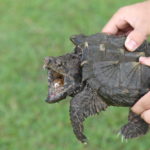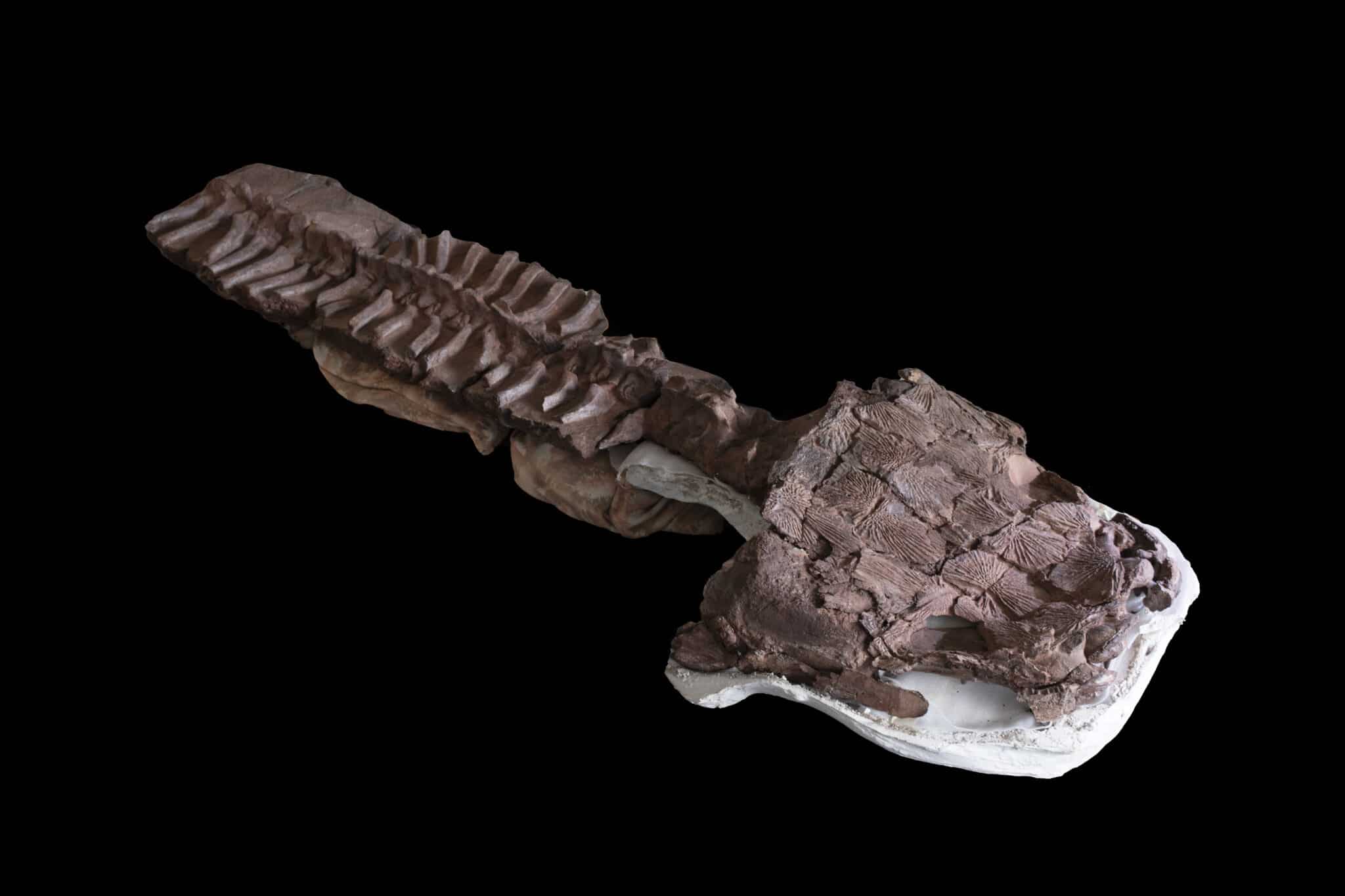When you think of terrifying beasts from the distant past, you quickly think of dinosaurs, but for a long time, danger was lurking everywhere. For example, 40 million years before the first dinosaurs appeared, a ferocious predator was lurking in the swamp waters near Antarctica. Meet Jayasia GenaiA swamp creature with a head shaped like a toilet seat.
His skull alone was more than 60 cm long, Write scientists in nature About their newly discovered fossil. The salamander-like creature lurked with its jaws wide open, ready to close around any animal that dared to swim too close. “Gaiasia jennyae was much larger than humans. It probably hung at the bottom of swamps and lakes. Its massive, flat head had a large mouth that it could use to suck up prey. It had huge fangs, and the entire front of the mouth was made up of large teeth,” said researcher Jason Pardo of the Field Museum in Chicago. “It’s a large predator, but it was also likely a relatively slow-moving ambush predator.”
Paleontologists were shocked.
The fossil is named after the Jay As Formation in Namibia, where it was found, and after Jenny Clack, a paleontologist who specializes in the evolution of amphibians, reptiles, birds and mammals. “When we saw this huge specimen lying at the end of a rock, we were really shocked. I knew right away that this was something very special. We were all very happy,” said Claudia Marsicano, a co-author from the University of Buenos Aires. “As I was examining the skull, I noticed the structure of the front part. It was the only part that was clear at the time, and we saw very large, interlocking, distinct canines, creating a unique bite for animals of that time.
The team discovered several specimens, including one with a well-preserved skull and spine. “We had some really cool material, including a complete skull, which we could then use to compare with other animals from this time and learn about what this animal was and what made it unique,” says Pardo. It turned out to be a very special creature indeed.
swampy end of the ice age
This requires further clarification of the area in which the fossils were found. Namibia was much further south 300 million years ago, roughly equivalent to the northernmost point of Antarctica today. At that time, the Earth’s ice age ended. The swampy land near the equator dried up and forests appeared, but near the poles the ice melted and the swamp remained.
Animals everywhere evolved to adapt to the new climate. Early four-legged animals, called stem tetrapods, branched off into lineages that would one day become mammals, reptiles, and amphibians. At the edges of the Earth, such as what is now Namibia, this happened much less often and very ancient animal species persisted.
Old salamander
“Gayassia is a stem tetrapod, a remnant of that ancient group, before it evolved and split into animals that would become mammals, birds, reptiles and amphibians,” Pardo says. “It’s really amazing that Gaayassia is so old. It was related to animals that probably went extinct 40 million years ago.
For an outsider from a bygone era, Gaiacia did exceptionally well. “There are other ancient animals that were still around 300 million years ago, but they were rare and small, and they went their own way,” Pardo says. “Gaiacia was big and present in great numbers. In fact, it seems to have been the most important predator in its ecosystem.”
thriving ecosystem
Although scientists have only found one species, the fossil provides a lot of information about how the world changed at that time. “It tells us that what happened in the far south was very different from what happened near the equator. That’s really interesting, because a lot of groups of animals were emerging at that time and we don’t really know where they came from,” says Pardo. “The fact that we found Gaiasia so far south shows that there had to be a thriving ecosystem that allowed these large predators to survive.”





